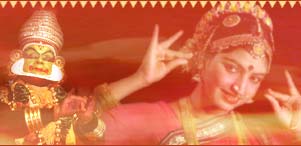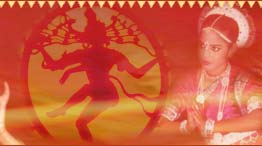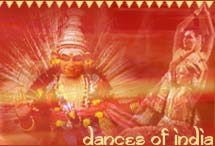Like other traditional dance forms, Kathak also began as a means of worship. In the ancient times, it was quite common to find groups of nomadic men and women narrating religious tales. These tribes would commonly preach in the form of songs accompanied with dance and music. In time, there was a complete new style of dance that was formed and caught the attention of many aspiring artists. From temple dancers to popular courtesans, this classical style transformed from a way of worship to an art of seduction to being one of the eight classical dances of India. In the 18th and 19th century it had lost its former fame because of its associations with prostitute houses. Today, however, the scene has completely changed with Kathak dancers being respected and given due appreciation for their talent. Several dance festivals are conducted to showcase and encourage new talents.
History and Evolution
The evolution of Kathak dates back to many centuries, during which a group of raconteurs would spread philosophical stories through the form of songs and dance. They were known as 'kathakas'. In time the profession was passed down to the future generations and by the 13th century a new dance form had surfaced. However, since its inception, many amendments and alterations have come across. During the Bhakthi movement in the 15-16th century, just like other dance styles, Kathak was also affected with few changes in its movements. Kathak was soon introduced in the Mughal courts at the same time and was further impacted by Persian influences. The characteristic chakkara (spin) seen today in Kathak was actually derived from a dance style popular in the Middle East. With so many changes Kathak soon emerged as source of entertainment rather than a medium of worship. Under the British Raj, the popularity of Kathak declined to great extent as it was denounced to be vulgar and solely restricted to courtesan. Despite its decline in the 19th century, there was a sharp increase of various Kathak schools in the country. The Lucknow, Jaipur, Raigarh, Benaras Gaharans became popular, each of them representing a distinctive style of Kathak. Post-independence, Kathak was no more seen as a mere source of entertainment, but became an important part of Indian culture.
Significance
Kathak is an important form of dance, mainly popularized in northern part of India. Being an ancient form of art, it reflects the culture and traditions of our country. This dance form recites religious and mythological tales that are significant to our society.
Attire and Makeup
Traditionally, Kathak dancers draped a sari, but later women started to wear a long flowing skirt accompanied with a well-fitted blouse. It is known as lehenga-choli; very similar to the 'ghaghra'. However, the Lucknow house of dance has adopted a different attire altogether. It is known as the 'anarkali' style that is very similar to the 'churdidaar 'kameez'. This has been further accessorized with a small feathered cap and a waistcoat or a waist belt. Men, on the other hand, either wear a 'dhoti' or a 'kurta-churidar' during the performance. The makeup under this dance form is concentrated on highlighting the facial features such eyes and lip.
Postures
Unlike other forms of classical dance, Kathak emphasizes more on the foot work. A dancer has to control his or her leg movements according to the rhythm of the music. The hand movements are very few under this form of dance style. At times a Kathak dancer does not have to restrict to a particular step they can change the order of steps to their liking.
Music
There are a number of musical instruments that are used for a Kathak performance, amongst which 'sitar', 'tanpura', 'tabla', 'sarod', 'santur', 'bansuri', 'pakhawaj' are the most popular. Normally you do not find the dominance of more than two instruments at the same time. The music played can be very slow or extremely fast paced depending on the piece which the dancer is performing.
Famous Personalities & Gobal Reach
The country has produced many eminent Kathak artists that have not only revolutionized this dance style, but also have been an inspiration to many. Some of them such as Shovana Naryan, Uma Sharma and Briju Maharaj etc are well-known names in the field of Kathak dance. They have given several shows and won many prestigious awards. There have been several Kathak dance festivals that are conducted throughout the globe. The NAAD festival of Kathak held in UK goes to show its growing popularity among the global audience. The Kathak Mahotsav held in Delhi every October is a mesmerizing sight that attracts huge number of people.




